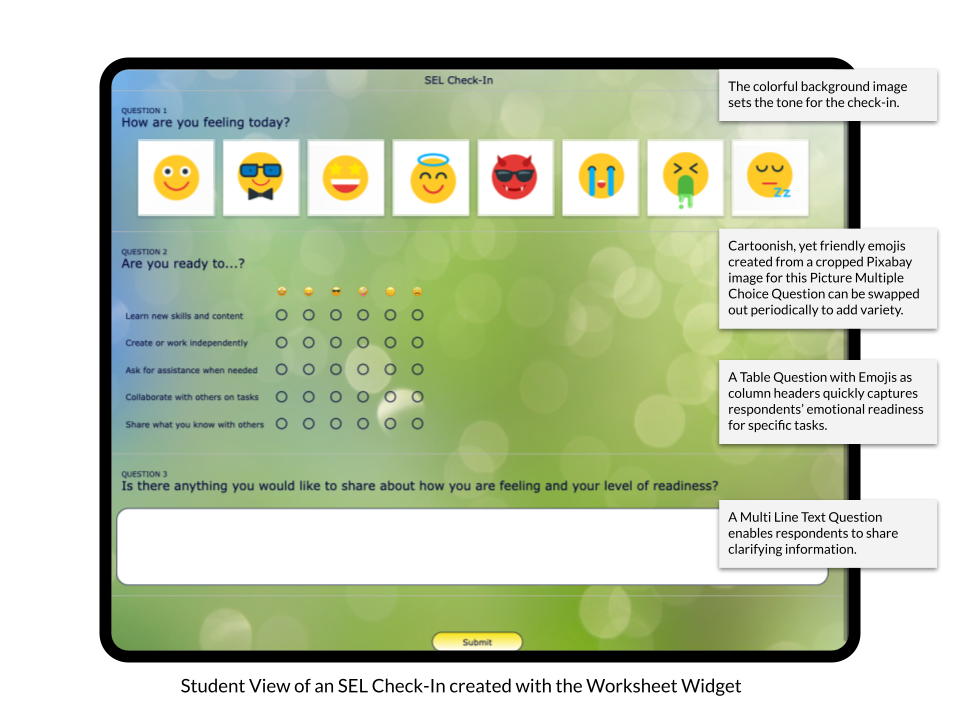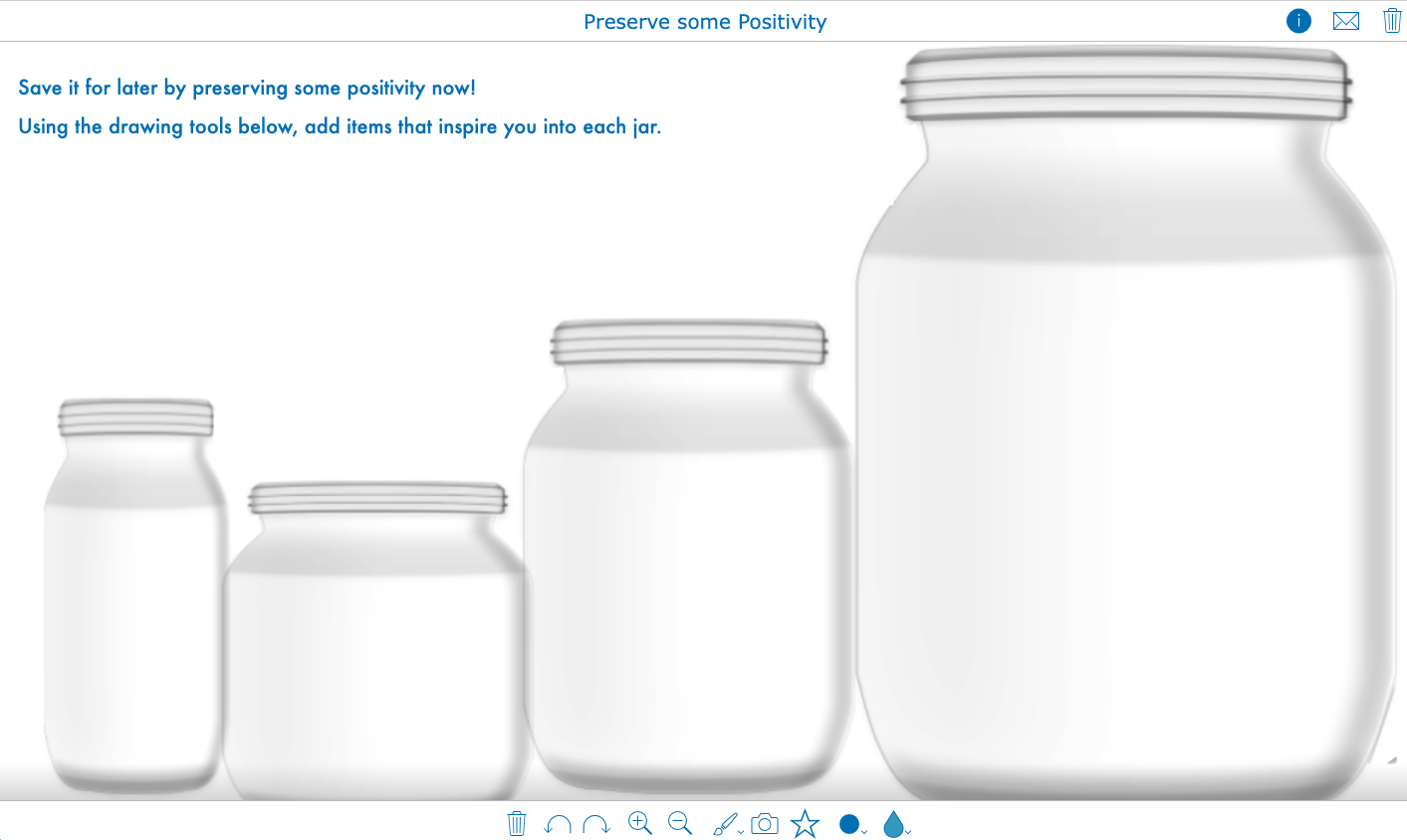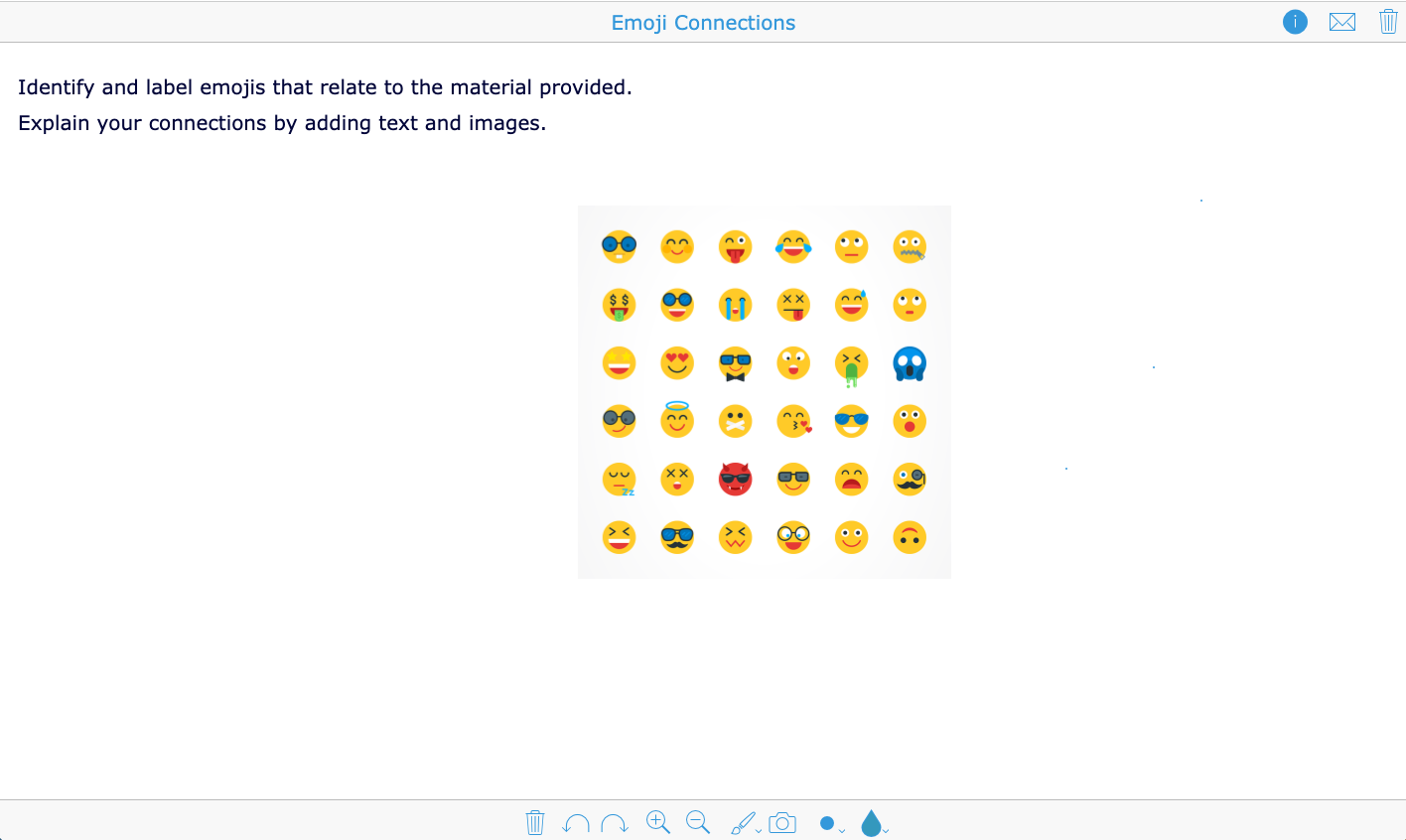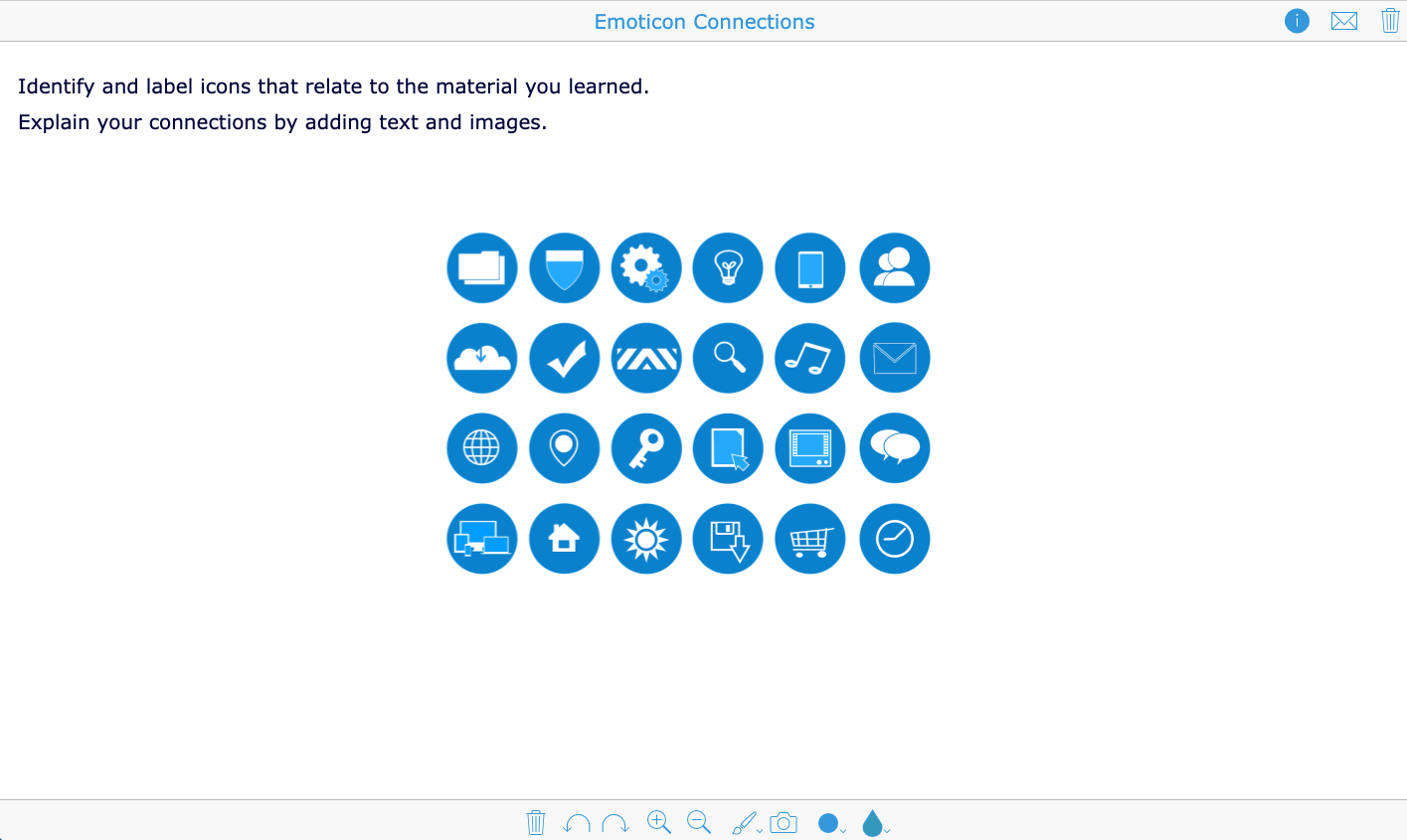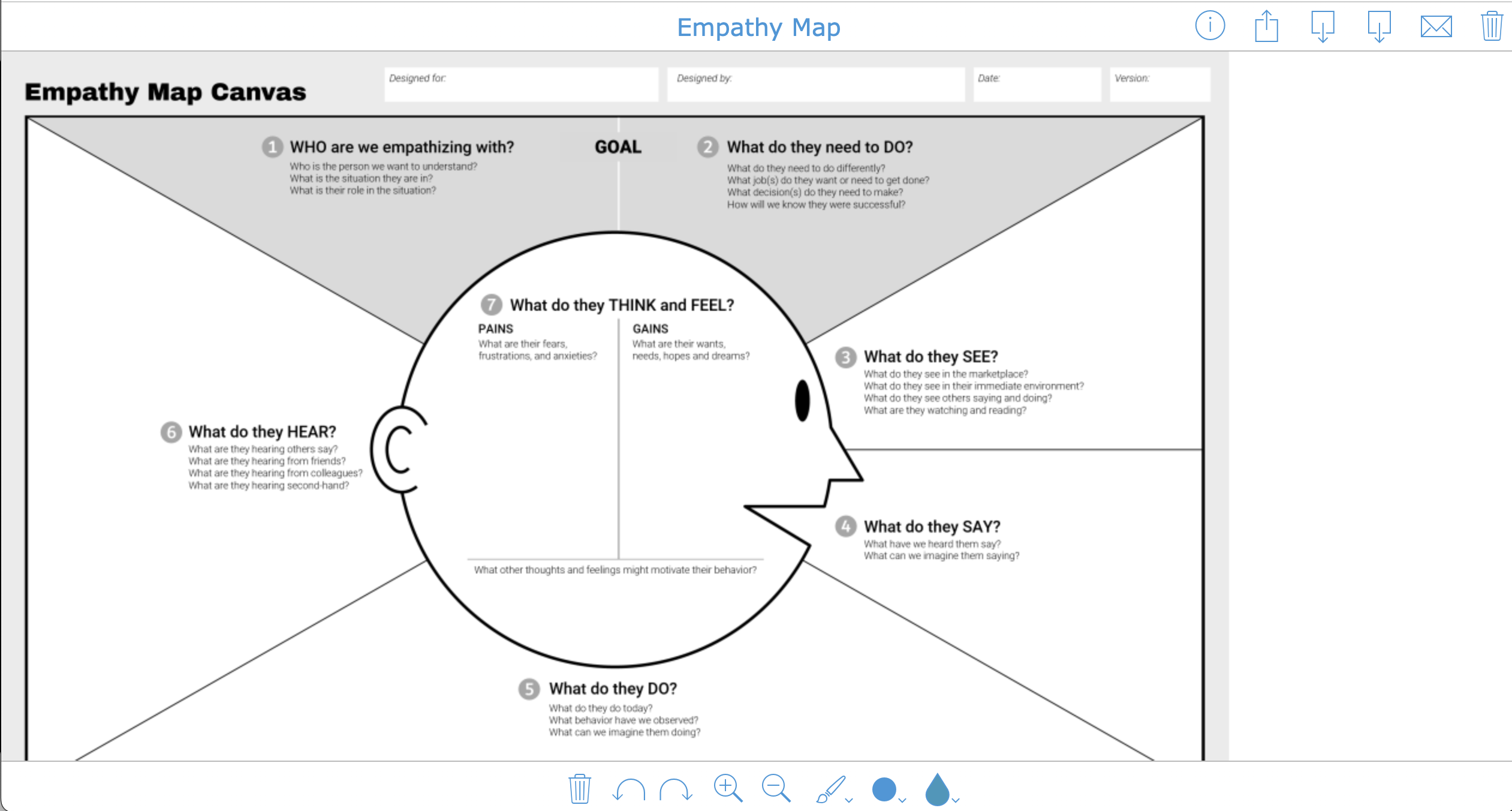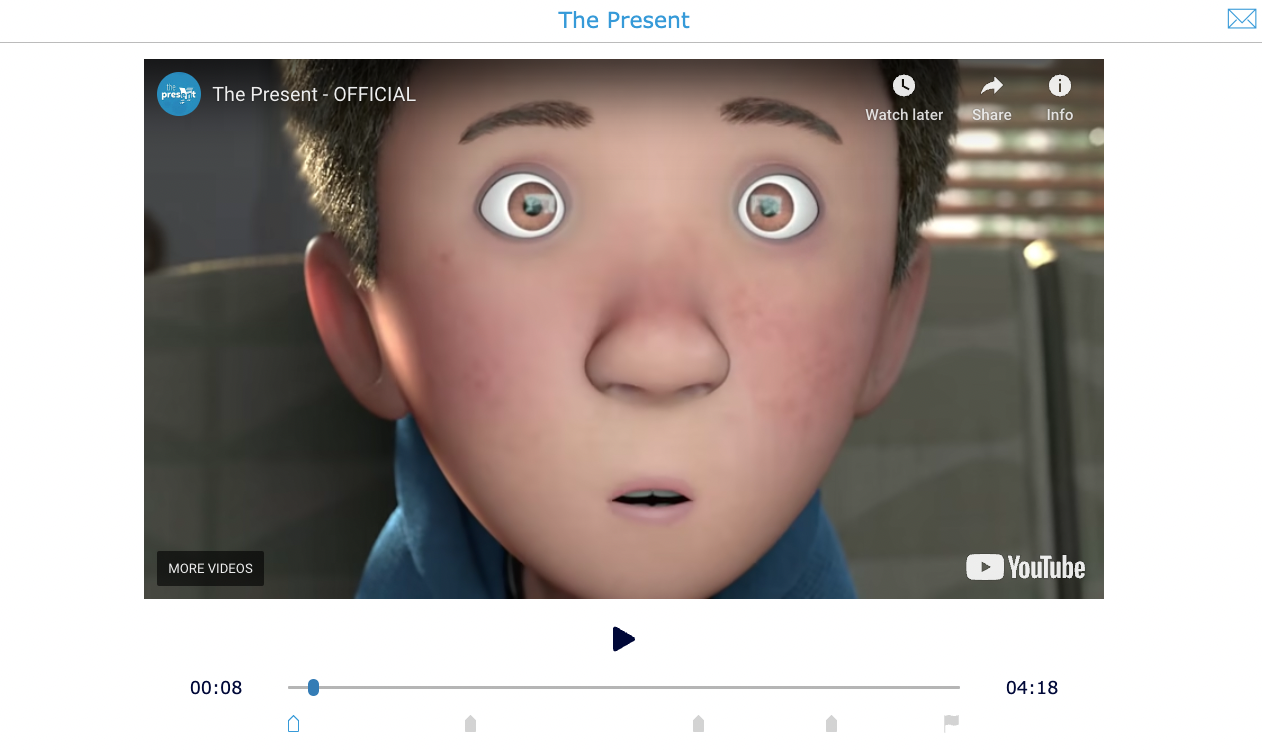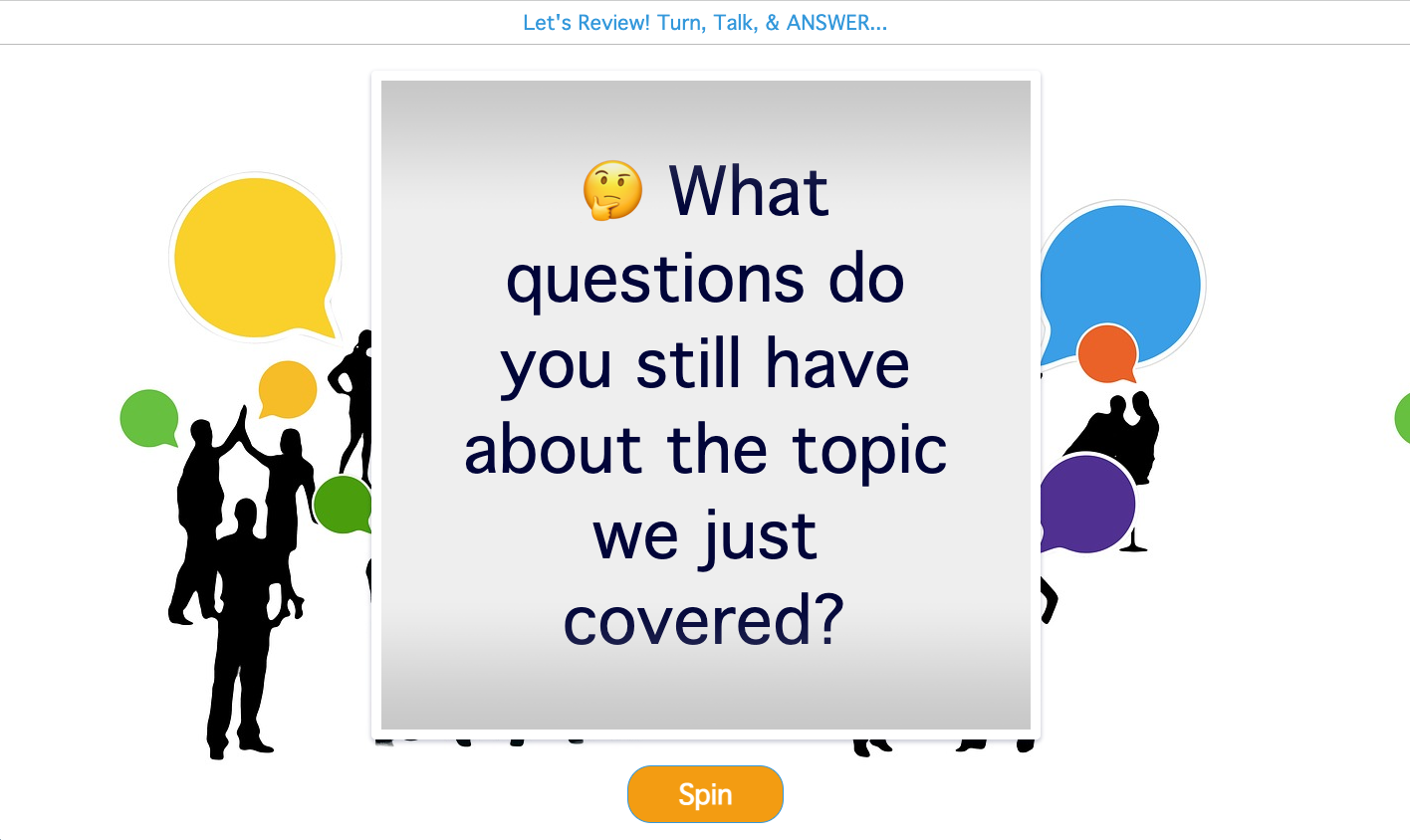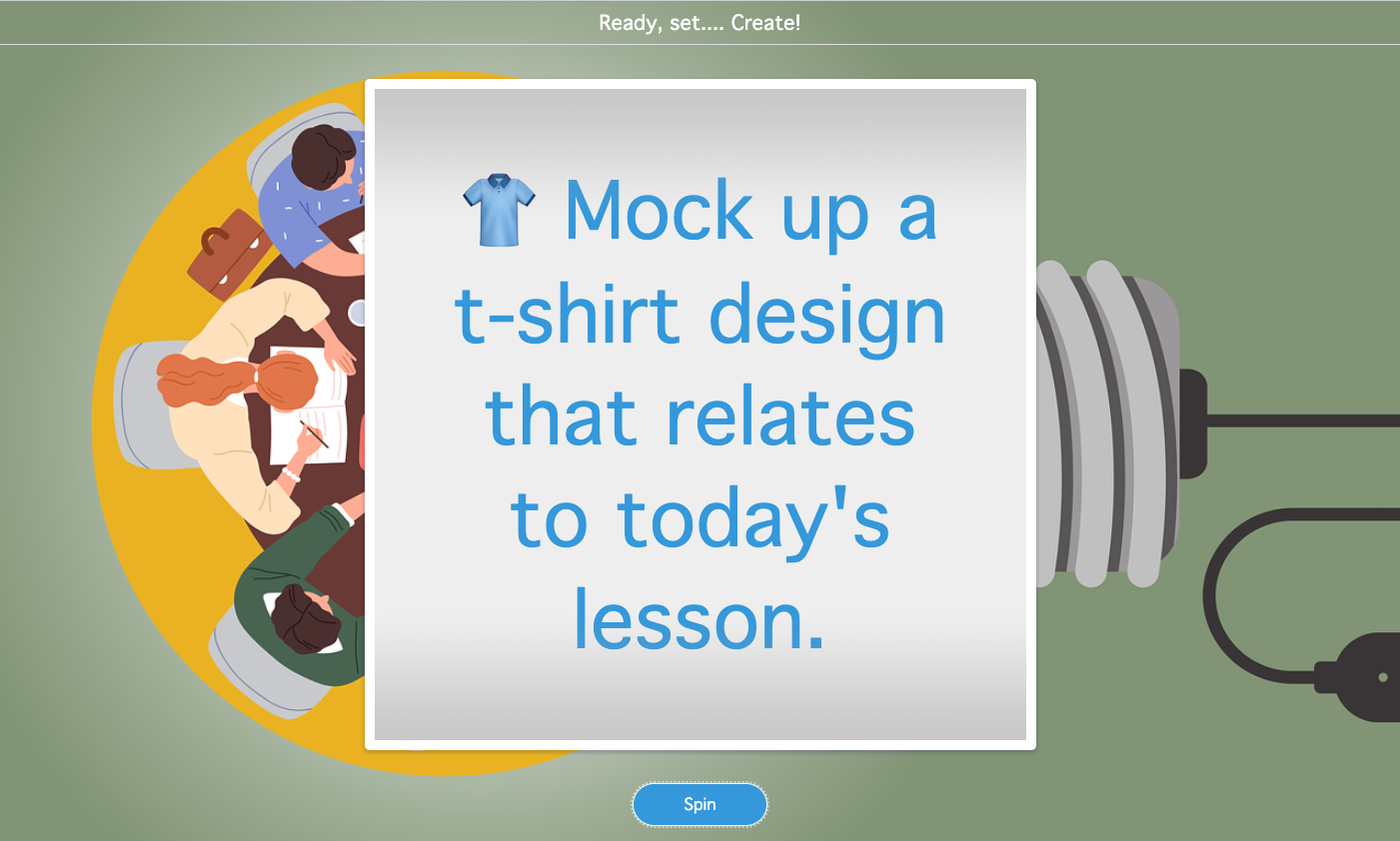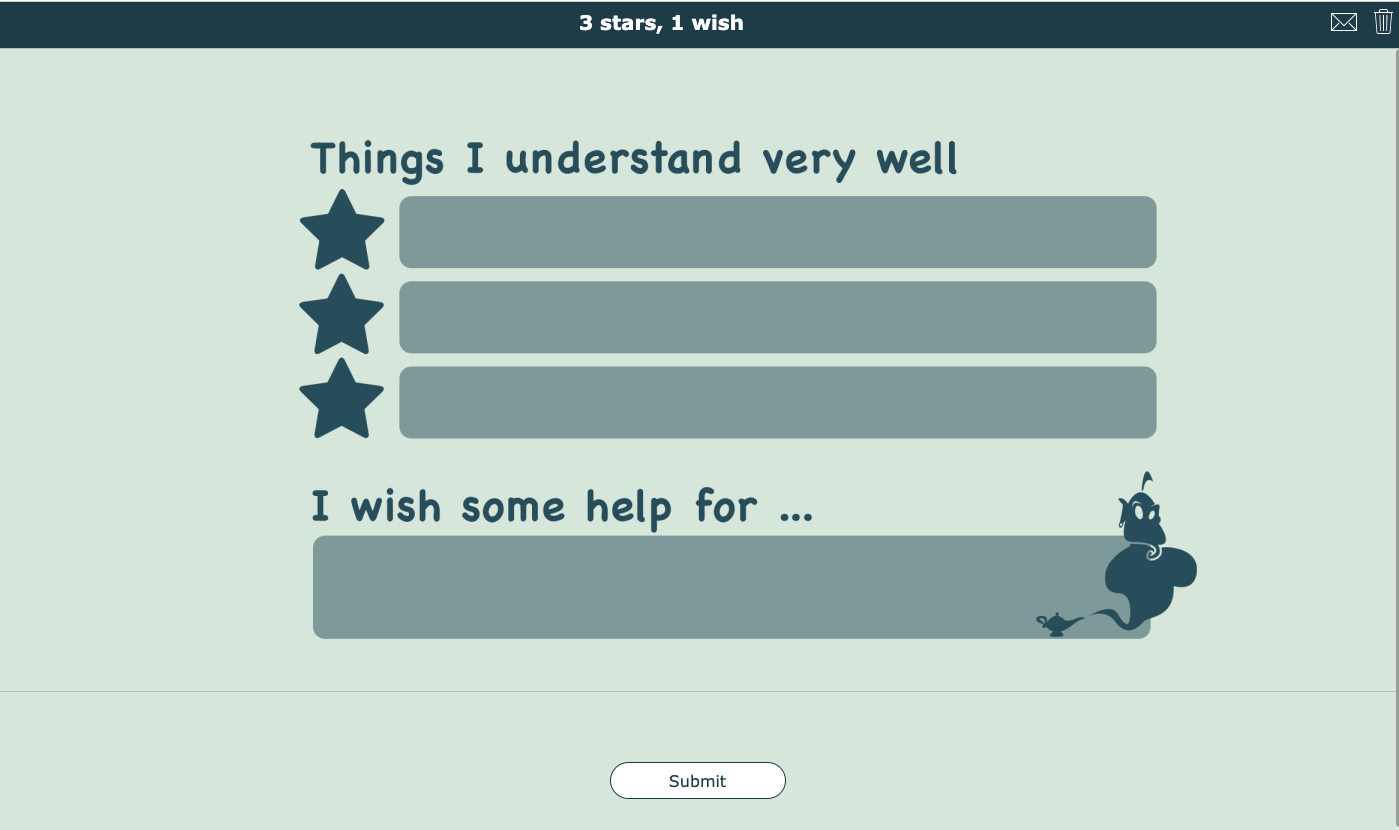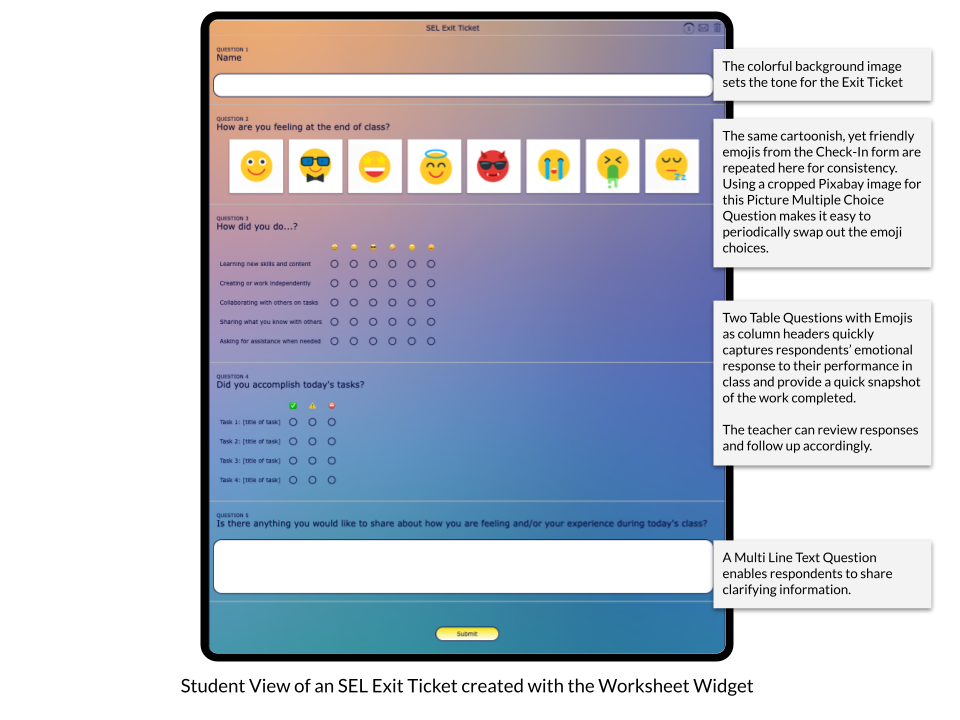10+ Creative Social Emotional Learning Activities to Use in Class
 Kate Baker —
Kate Baker —
Social Emotional Learning (SEL) isn’t just another educational buzzword. SEL is foundational to building a positive classroom and school culture. By modeling and promoting SEL in the classroom on a daily basis, teachers can create a positive and supportive learning environment that benefits all students all year long.
In this post, we will...
✅ Define Social Emotional Learning
✅ Share SEL-focused activities to increase classroom engagement
Work smarter, not harder, to develop students’ social and emotional skills with 10+ creative social emotional learning activities for routine classroom engagement made with BookWidgets!
Before we begin: If you are new to BookWidgets, BookWidgets is an all-in-one platform that supports the entire learning process, allowing teachers to create interactive activities and evaluate their students' understanding from start to finish. When BookWidgets is integrated into a Learning Management System like Google Classroom, Microsoft Teams, Moodle, Canvas --& more!--, teachers can use "Live Widgets" to keep an eye on their students' progress in real time to give feedback and support when needed. Interested in purchasing BookWidgets without committing to a full year subscription or waiting for the next budget cycle? Learn more about our special, limited-time pricing for schools and groups of teachers.
Social Emotional Learning Defined
Let's first take a look at the definition of social emotional learning because SEL involves much more than emotions.
CASEL, the Collaborative for Academic, Social, and Emotional Learning, defines social emotional learning (SEL) as…
"the process through which all young people and adults acquire and apply the knowledge, skills, and attitudes to develop healthy identities, manage emotions and achieve personal and collective goals, feel and show empathy for others, establish and maintain supportive relationships, and make responsible and caring decisions.”
The CASEL framework is a guide for making SEL an actionable part of human development and education with five core competencies that can be incorporated into daily lessons:
- Self Awareness
- Self Management
- Responsible Decision Making
- Social Awareness
- Relationship Skills
The above five core competencies are interwoven into everything teachers and students do in the classroom, and you can easily weave them together with your subject area content with CASEL's three signature practices for incorporating SEL into the beginning, middle, and end of lessons:
- Welcoming Activities, Routines & Rituals that build community and connects to the work ahead
- Engaging Strategies that offer opportunities that vary in complexity for individual and collective learning
- Optimistic Closures that highlight individual and shared understandings, provide a sense of accomplishment, and support forward-thinking
Now that you are more familiar with the mechanics of social emotional learning, let's check out 10 creative lesson activities that align with CASEL's core competencies and can be used to welcome, engage, and close the class.
10+ Creative SEL Activities for Routine Classroom Engagement
Here are 10 interactive lesson activities and daily classroom routines that align with the five core social emotional learning (SEL) competencies—self-awareness, self-management, social awareness, relationship skills, and responsible decision-making. These activities vary in complexity and are designed to foster students' connection to the content, improve classroom climate, and support emotional regulation and reflection throughout the school day. Whether you're looking for SEL check-ins, visual reflection tools, or group discussion strategies, each activity offers a practical and engaging way to integrate SEL into your teaching.
➡️ All of the featured activities can be found in this curated BookWidgets SEL Activities Folder, ready to customize and share with your students.
1. SEL Student Check-In Activity
Welcome students to class by establishing a routine that invites students to share their current emotional state and readiness for class with this Worksheet widget. Teachers can follow-up with students during the class, offering assistance and encouragement as needed, as well as recognizing those who are doing well.
2. Preserve Some Positivity: SEL Reflection Activity for Self-Awareness
This activity can tap into students’ self-awareness and be used as a relationship builder by providing them with an opportunity to share what inspires them as students add images and text to the jars on this Whiteboard widget. When students need a pick-me-up, they can “open” their jars and spend some mindful moments thinking about the things that inspire them.
3. Emoji Reflection Activity for SEL and Student Engagement
This activity, also made with a Whiteboard widget, raises students’ self-awareness of how they feel about the content. Activating students’ ability to emotionally reflect on the material learned in class, students can make connections between various emojis and the content of a lesson by adding notes and explanations in the space provided.
4. Visual SEL Activity: Connect Content with Icons
Similar to the Emoji Connections activity, but with a less emotional focus, students make decisions to mark up this Whiteboard widget with notes and images, connecting the content learned in the lesson to an icon. Students can turn and talk to classmates about the choices made and/or the teacher can moderate a class discussion to review the choices made.
5. Empathy Map SEL Activity for Perspective-Taking
Based on human-centered design, an empathy map can be used for character analysis in literature class, analysis of historical figures in a pivotal moment of time, and/or for examining a person we encounter in our daily lives. Have students complete this map individually and then review the individual maps as a whole class, small group, or team. Repeat this exercise multiple times to reveal how people's thinking and perceptions have changed over time.
6. SEL Video Quiz Activity: Teaching Empathy through Short Films
Use a Video Quiz widget and a short film with a strong social-emotional message as a powerful way to model and teach students social-emotional skills.
7. Discussion Spinner for SEL: Turn, Talk, and Reflect
This Randomness widget encourages the practicing of relationship skills by getting students talking about the material learned. Simply spin the wheel to generate a discussion starter for students to think critically and talk socially about what they learned during the lesson.
8. Creative SEL Exit Activity: Show What You Know Spinner
Students can spin the wheel to generate a creative way to quickly show what they know about the content from the lesson. This quick "project" could be completed individually or in small groups and makes for a fun way for students to practice decision making and relationship skills, as well as social awareness when working in groups. After they show what they know, students can self-evaluate the decisions made during the creation process.
9. Student Self-Reflection Worksheet for SEL
Students can quickly reflect on their understanding of the content of a lesson by noting three stars (things they understand well) and making a wish (something with which they need help) on this Worksheet widget.
10. SEL Exit Ticket Reflection Activity
Concluding the lesson with this exit ticket, which is similar in design to the Check-In activity, will reinforce all of the social emotional learning competencies by providing students with an opportunity to reflect on their performance during the class. By comparing and contrasting how they felt at the beginning of the learning experience with how they performed at the conclusion of the class, students can correlate how their emotions and expectations impacted how they functioned throughout the learning experience.
🧩 Bonus Activity: Journey to Calm – A Game-Based SEL Adventure
Bring game-based learning and social emotional development together with Journey to Calm, a calming and interactive digital board game created using a Hotspot Image widget. In this self-paced activity, students navigate through zones, completing engaging challenges such as daily affirmation puzzles, whiteboard reflections, and breathing technique videos. Ideal for classroom brain breaks or end-of-day reflection, this immersive SEL experience encourages students to self-regulate, express gratitude, and build emotional awareness—all while having fun!
Thanksgiving-Themed Gratitude Activities for SEL (Bonus!)
Bring the spirit of gratitude into your classroom with these four Thanksgiving-themed SEL activities. Each activity reinforces emotional awareness, builds community, and supports year-round social-emotional learning. Whether used in November or throughout the school year, these digital gratitude activities for students make reflection engaging, creative, and meaningful.
1. Grateful Turkey Hand
This digital version of the classic Thanksgiving hand turkey taps into nostalgia while strengthening design skills and reflective thinking. Students use digital stickers or the drawing tools to create their turkey hand and list three things they are grateful for. Great as a quick class project without all of the mess!
2. Gratitude Frayer – Whiteboard Version
Using a Frayer Model layout, students fill in each quadrant—Person, Place, Thing, and Activity—with text, images, or drawings that represent what they are grateful for. This structure supports emotional vocabulary development and encourages more specific, thoughtful reflection.
3. Gratitude Frayer – Writing-Only Version
A quicker alternative to the Whiteboard version, this writing-only Frayer uses an Annotate Picture question type. Students type directly into each labeled space—Person, Place, Thing, and Activity—to complete their gratitude reflection.
4. Gratitude Spinner Wheel
Perfect for partner discussions, morning meetings, or full-class sharing, this Gratitude Spinner Wheel prompts students to reflect on specific things they are thankful for. The element of chance keeps participation lively and helps normalize verbal expression of gratitude.
Gratitude routines support the five core SEL competencies—self-awareness, self-management, social awareness, relationship skills, and responsible decision-making. Whether used during Thanksgiving or anytime students need grounding and connection, these activities help build a positive classroom climate where reflection and well-being thrive.
Wrap Up
Social Emotional Learning (SEL) is a critical aspect of K–12 education that positively influences students' academic achievement, emotional well-being, and long-term success. When educators embed SEL practices into daily instruction—through structured activities, student check-ins, reflection routines, and relationship-building strategies—they create a supportive classroom culture where students feel seen, heard, and empowered.
Integrating SEL into your teaching doesn’t require a complete curriculum overhaul. With easy-to-use digital tools like BookWidgets, you can implement engaging social emotional learning activities for elementary, middle, and high school classrooms that align with CASEL’s five core competencies. From interactive whiteboard reflections to empathy mapping and video-based discussions, these ready-made resources help students develop emotional intelligence, build self-regulation skills, and strengthen peer relationships.
By modeling SEL strategies and using consistent routines that support mental health and positive behavior, you’re not just teaching content—you’re nurturing the whole child and helping students thrive both in and beyond the classroom.
Want to learn more about creating engaging lesson activities with BookWidgets?
✔️ Sign up for upcoming free webinars and view recordings on the BookWidgets Teacher Academy Page.
✔️ Learn more about our special, limited-time pricing for groups of teachers for purchasing BookWidgets now without having to wait for the next school year or budget cycle.
✔️ Follow BookWidgets on BlueSky and LinkedIn and join our teacher community on Facebook!
✔️ And, be sure to connect with me, too, on BlueSky, Facebook, and LinkedIn!

